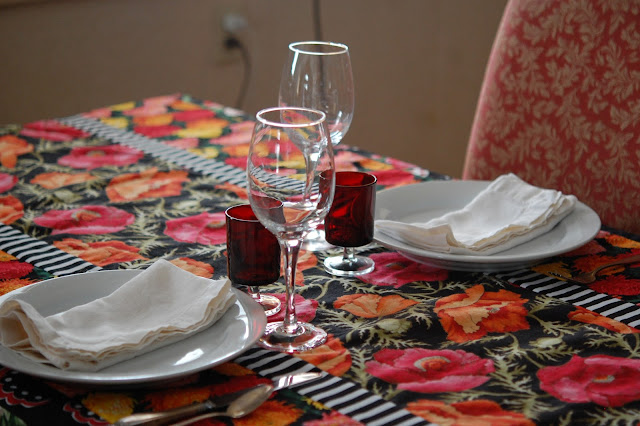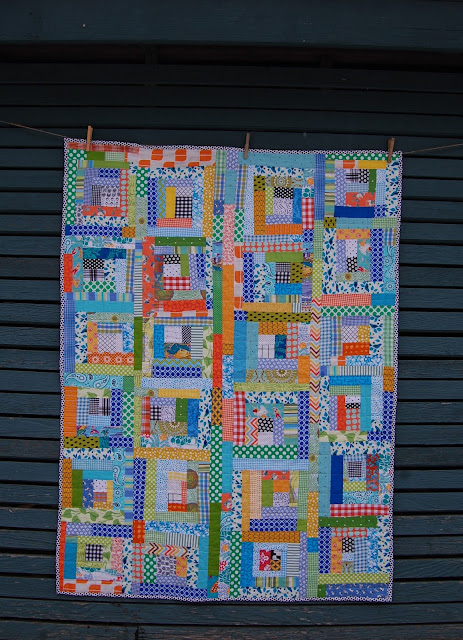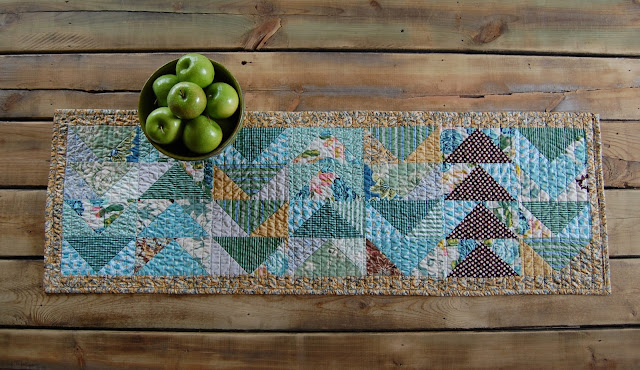An old blog friend, who is also a Facebook friend, asked me to make a holiday tablecloth for her long narrow table. She and her husband have
Both designs are based on Jane Brocket quilts in her book The Gentle Art of Quilt-making. I love Jane's quilts, which are full of florals and bright, saturated fabrics.
This one is based on Jane's Russian Shawl quilt. Margaret thought it would be wonderful for Easter, so I wanted to get it done first. I even found one of the fabrics Jane used—the mums. The other fabrics I found either online or at our local quilt fabric shop and are similar to ones Jane used. I had pretty much given up on that local shop, which feels like an old lady quilt store, pardon my ageism. But happily they seem to have expanded their offerings from the dated fabrics of traditional quilts I learned to make in the 1970s and 1980s. I purchased the black and white stripe there, the black and white graph check in the edge, as well as the gorgeous rose floral in the drop.
If I didn't tell you, maybe you would not imagine the amount of time and work it takes to shop for and choose fabrics for a project commissioned by a customer. This can take weeks of online browsing, local store shopping, and elimination. Also, when buying fabrics online, there is no way to be certain that fabrics will go well together until receiving them and playing with them. It's always nice to add fabrics to the stash though, even if I don't use them for the intended project.
 |
| The tablecloth on our little kitchen table. On Margaret's, it will drop the same distance on the ends as it does here on the sides. |
I lined the tablecloth with very thin black muslin. I learned the hard way not to sew this like an envelope—sewing edge seams, then turning inside out—which I did first. I had hoped to avoid adding a binding. But it is impossible to make a pieced top lie flat, so when topstitching the seams, I got puffiness here and there. I pressed the bejeezers out of it, but it still poofs a bit, though not enough to ruin it (in my opinion). Then I did add a binding in the same black and white graph check as the outer border.
So next tablecloth I will simply baste the top with the lining, topstitch, and bind it. This method does not pucker, because you are flattening the top from center out as you baste, and the edges are not secured before topstitching. Make sense? I will be using Jane's design that also inspired the second quilt in my blog header—on point squares, which she calls Hydrangea.
Finished tablecloth is 50" x 99"






















































